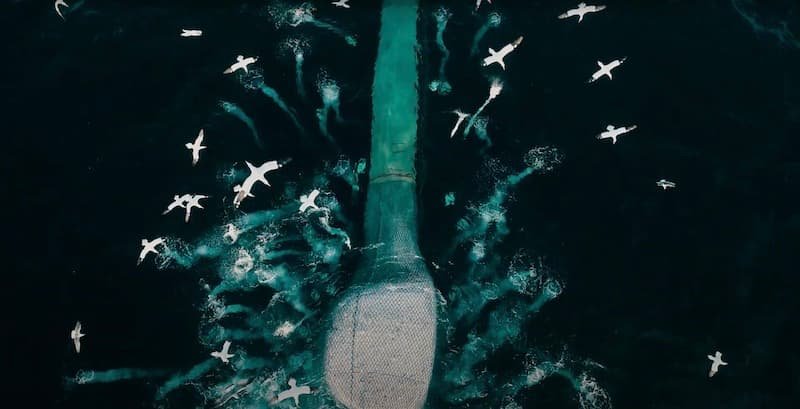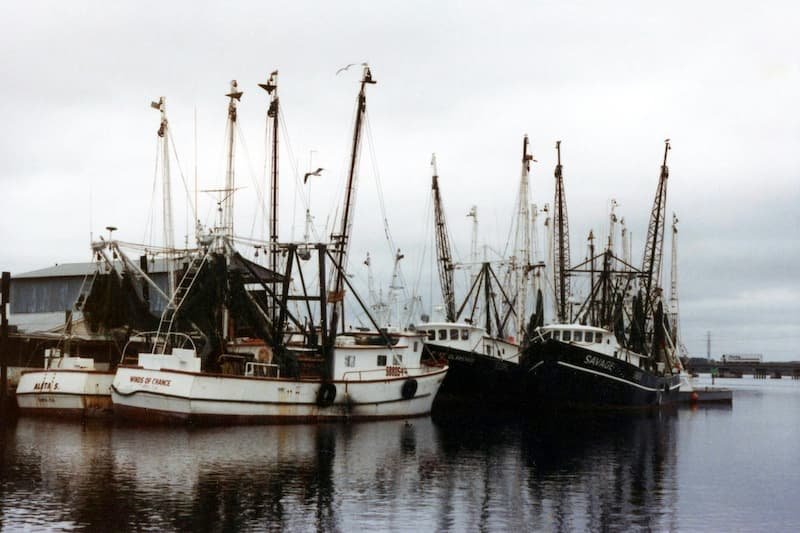
 Katie Wood
Freediver, Writer, Explorer
Katie Wood
Freediver, Writer, Explorer

 Katie Wood
Freediver, Writer, Explorer
Katie Wood
Freediver, Writer, Explorer
Bycatch, the unintended capture of non-target species such as dolphins, sea turtles, and seabirds during commercial fishing operations, is an escalating crisis in our oceans. This unintended consequence of fishing practices not only threatens marine biodiversity but also undermines the sustainability of global fisheries. Recent studies underscore the grave implications of bycatch, revealing alarming statistics and calling for urgent action to mitigate its effects.
Bycatch is a pervasive issue, impacting almost every type of fishing operation. According to a study by the Food and Agriculture Organization (FAO), approximately 10.8 million tonnes of bycatch are discarded annually, constituting about 10% of the global catch. This figure includes a wide array of marine life, from small invertebrates to large marine mammals and sharks.
A 2020 report by Oceana highlights that in the U.S. alone, nearly 50,000 sea turtles are caught in fishing gear each year, with many of these incidents resulting in fatalities. Similarly, a 2019 study published in the journal Nature Communications estimates that longline fishing fleets kill around 300,000 seabirds annually, including endangered species like the albatross.
The ecological repercussions of bycatch are profound. Marine ecosystems are complex webs of interdependent species, and the removal of any species can disrupt these delicate balances. For example, sharks are apex predators that play a critical role in maintaining the health of marine ecosystems. The depletion of shark populations due to bycatch can lead to the overpopulation of their prey species, which in turn can cause the decline of other marine life and the degradation of coral reefs.
Sea turtles, another frequent bycatch casualty, are crucial for the health of seagrass beds and coral reefs. They help maintain the balance of these ecosystems by grazing on seagrasses and controlling sponge populations on coral reefs. The decline in sea turtle populations due to bycatch can thus have cascading effects, ultimately harming fish stocks and other marine life that depend on these habitats.

The economic impact of bycatch is also significant. Fisheries rely on healthy marine ecosystems to sustain fish stocks. Bycatch can lead to the depletion of these stocks, reducing the long-term viability of fishing industries. According to the World Bank, global fisheries could gain up to $83 billion annually if fish stocks were managed sustainably and bycatch was reduced.
Moreover, the tourism industry, which relies heavily on marine biodiversity, also suffers from the effects of bycatch. Coral reefs, which are major tourist attractions, are particularly vulnerable to the ecological imbalances caused by bycatch. A decline in marine biodiversity can thus lead to a decrease in tourism revenue, affecting coastal communities that depend on this industry.
Bycatch also raises significant social and ethical concerns. Many of the species caught as bycatch are protected or endangered, and their capture violates international conservation agreements. The indiscriminate killing of non-target species is not only a waste of marine resources but also a moral issue, prompting calls for more humane and sustainable fishing practices.
In many coastal communities, small-scale fishers who use traditional, low-impact fishing methods are often the most affected by the depletion of fish stocks caused by bycatch from industrial fishing fleets. This exacerbates poverty and food insecurity in these communities, highlighting the need for equitable solutions that protect both marine life and the livelihoods of small-scale fishers.

Several technological advancements offer promising solutions to reduce bycatch. One such innovation is the use of bycatch reduction devices (BRDs) in trawl nets. BRDs allow non-target species to escape while retaining the target catch. A study by the Australian Fisheries Management Authority found that the use of BRDs in the Northern Prawn Fishery reduced bycatch by up to 40% without compromising the catch of target species.
Another promising technology is the use of circle hooks in longline fisheries. Circle hooks are less likely to be swallowed by non-target species and are easier to remove, reducing injury and mortality rates. Research published in the journal Fisheries Research indicates that circle hooks can reduce sea turtle bycatch by up to 80% compared to traditional J-hooks.
Acoustic deterrent devices, also known as pingers, are another effective tool. These devices emit sounds that deter marine mammals from approaching fishing gear. A study by the National Oceanic and Atmospheric Administration (NOAA) found that the use of pingers in gillnet fisheries reduced bycatch of harbor porpoises by up to 90%.
Effective policy and regulatory measures are crucial to addressing the bycatch problem. The implementation of bycatch quotas, similar to those used for target species, could incentivize fishers to adopt more selective fishing practices. The European Union’s Common Fisheries Policy, for example, includes provisions for mandatory bycatch reduction and the gradual elimination of discarding practices.
Marine protected areas (MPAs) also play a vital role in reducing bycatch. MPAs restrict certain fishing activities, providing safe havens for non-target species. A 2018 study in the journal Nature found that well-managed MPAs can lead to significant increases in the abundance and diversity of marine life, benefiting both biodiversity and fisheries.

Engaging local communities in bycatch reduction efforts is essential for the success of conservation initiatives. Community-based management approaches, where local fishers participate in the development and enforcement of bycatch reduction measures, have proven effective in many regions. For instance, in Papua New Guinea, a community-based approach to managing turtle bycatch in small-scale fisheries resulted in a significant reduction in turtle mortality, according to a study published in the journal Marine Policy.
International collaboration is key to addressing the global nature of bycatch. Regional fisheries management organizations (RFMOs) play a critical role in coordinating bycatch reduction efforts across different countries. The Western and Central Pacific Fisheries Commission, for example, has implemented measures to reduce sea turtle bycatch in tuna fisheries, including the mandatory use of circle hooks and training programs for fishers on safe handling and release techniques.
Moreover, international agreements such as the United Nations Fish Stocks Agreement and the Convention on the Conservation of Migratory Species of Wild Animals provide frameworks for cooperation on bycatch issues. Strengthening these agreements and ensuring their effective implementation is vital for the protection of migratory species that traverse national boundaries.

Raising public awareness about the issue of bycatch is essential for driving change. Consumers can play a crucial role by demanding sustainably caught seafood and supporting certification schemes such as the Marine Stewardship Council (MSC), which includes bycatch reduction criteria in its certification process. A 2019 survey by the MSC found that 72% of consumers are willing to pay more for sustainably sourced seafood, indicating strong public support for responsible fishing practices.
Education and outreach programs can also help build public support for bycatch reduction measures. Initiatives such as the Monterey Bay Aquarium’s Seafood Watch program provide consumers with information on sustainable seafood choices, helping to drive demand for bycatch-friendly products.
Bycatch represents one of the most pressing challenges facing our oceans today. Its impacts on marine biodiversity, economic sustainability, and social equity are profound, calling for urgent and coordinated action. Technological innovations, effective policy measures, community engagement, international collaboration, and public awareness are all critical components of a comprehensive strategy to reduce bycatch.
Addressing bycatch is not only a matter of conserving marine life but also of ensuring the long-term sustainability of our fisheries and the well-being of coastal communities. By taking concerted action to reduce bycatch, we can move towards a more sustainable and equitable future for our oceans and the people who depend on them.
As we navigate the complexities of marine conservation, it is imperative that we recognize bycatch as a silent killer that requires our immediate attention. Through collective efforts and sustained commitment, we can mitigate its harmful effects and safeguard the health of our oceans for generations to come.